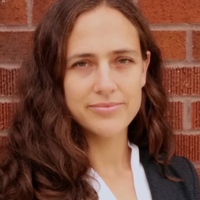Presented by the ASL Program in Penn's Department of Linguistics.
This presentation analyzes key social and interactional mechanisms driving a grammatical divergence between visual American Sign Language (ASL) and protactile American Sign Language (PTASL). This divergence was triggered by the protactile social movement which originated in the Seattle DeafBlind community in 2007 and since then has been spreading across the country. Protactile leaders advance the radical claim that all human activity can be realized without the use of vision or hearing. As this movement has taken root in practices and institutions, DeafBlind people who were suffering from social isolation have found themselves embedded in novel patterns of interaction, discourse, and practice. As they find new ways to talk within and about this world, the internal structure of their language is recalibrated to it. This process is leading to the emergence of new deictic and phonological systems in PTASL. Drawing on more than 10 years of linguistic and anthropological research and a recent pilot study, Dr. Edwards offers a provisional sketch of these novel grammatical systems, as well as discussing the social and interactional foundations of their emergence. Dr. Edwards aims to shed new light on how languages emerge and develop.
Terra Edwards' research, broadly construed, is concerned with the interactional and social foundations of language and language use. For the past 18 years, she has pursued this interest in the Seattle DeafBlind community. Her dissertation (Anthropology, University of California, Berkeley, 2014) examines a grammatical divergence between Visual American Sign Language (VASL) and Tactile American Sign Language (TASL), triggered by the recent pro-tactile movement. She has focused mostly on emergent phonological and morphological systems in TASL.



